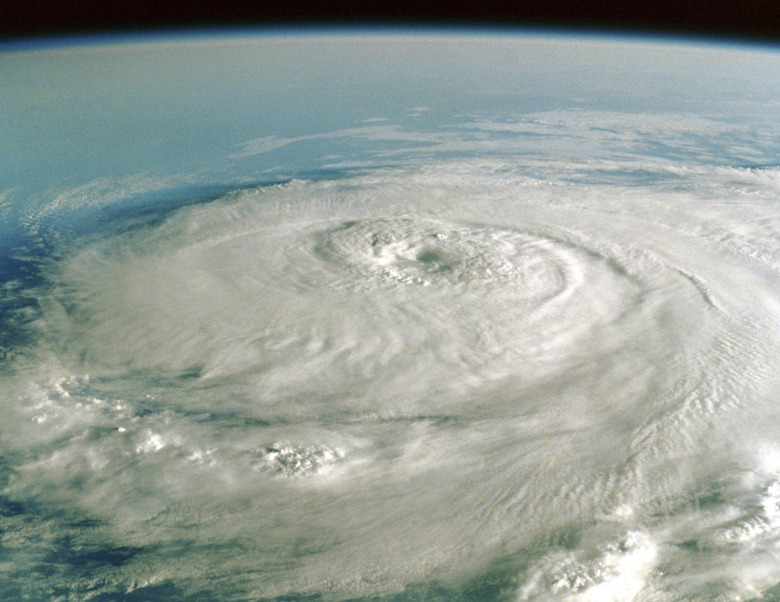How Does Water Affect Weather Patterns?
The Earth's weather patterns stem from a number of different factors, including the absorption and reflection of solar energy, the kinetic force of the planet's rotation, and particulate matter in the air. Large bodies of water can also have a significant effect on nearby weather patterns, as well as providing extra moisture for precipitation. Changes in the oceans may also lead to climate changes that can affect entire continents.
Hurricanes
Hurricanes
The powerful tropical cyclones that become hurricanes depend heavily on large bodies of warm, still water for their creation. Warm water near the surface rises, and as it cools, it discharges the moisture as rain and spirals down. This creates the precipitation energy and rotation of a tropical storm, and as the system travels through the ocean, it builds up more energy as it goes. The longer a hurricane spends in humid air over the ocean, the more powerful it can become when it finally strikes land. In some cases, a storm that weakens significantly over land may reorganize and return to hurricane strength if its path takes it back out over water.
Lake Effect Snow
Lake Effect Snow
Large bodies of water like the Great Lakes can affect the precipitation of nearby communities. In the winter, cold winds blowing across these lakes pick up considerable moisture, which then falls over nearby areas in the form of snow. This lake effect snow can greatly increase the amount of snow that falls in these areas, even in mild winters. Regions east of Lake Ontario typically experience 200 to 300 inches of snow in an average year, due to this increase in precipitation.
Heat Storage and Transfer
Heat Storage and Transfer
Large bodies of water can also serve as a heat sink, moderating temperatures nearby. Water has a high specific heat, which means it absorbs more energy than air to raise its temperature. During the summer, the ocean absorbs a large amount of heat from the sun, and it holds on to that heat as temperatures fall during the winter. When air passes over the warm ocean, its temperature increases, and this warm air moderates the temperature in nearby communities during cold months. This is why cities on the Pacific coast, for instance, experience much milder temperature swings from summer to winter than cities in the center of the United States. Ocean currents can also transfer heat between regions; for instance, the Gulf Stream transfers warmth from the equator to northern Europe.
El Nino and La Nina
El Nino and La Nina
Temperature swings in the ocean can affect weather and climate patterns on land for months at a time. When the Pacific Ocean becomes warmer than usual, a condition called El Nino, the mass of air that collects over the ocean can split the jet stream, bringing milder temperatures to the northern United States and causing a wet winter in the south. A cool Pacific produces a La Nina, with a mild winter in the South and colder air shifting into the New England region.
Cite This Article
MLA
Kazmeyer, Milton. "How Does Water Affect Weather Patterns?" sciencing.com, https://www.sciencing.com/water-affect-weather-patterns-21177/. 24 April 2017.
APA
Kazmeyer, Milton. (2017, April 24). How Does Water Affect Weather Patterns?. sciencing.com. Retrieved from https://www.sciencing.com/water-affect-weather-patterns-21177/
Chicago
Kazmeyer, Milton. How Does Water Affect Weather Patterns? last modified March 24, 2022. https://www.sciencing.com/water-affect-weather-patterns-21177/
